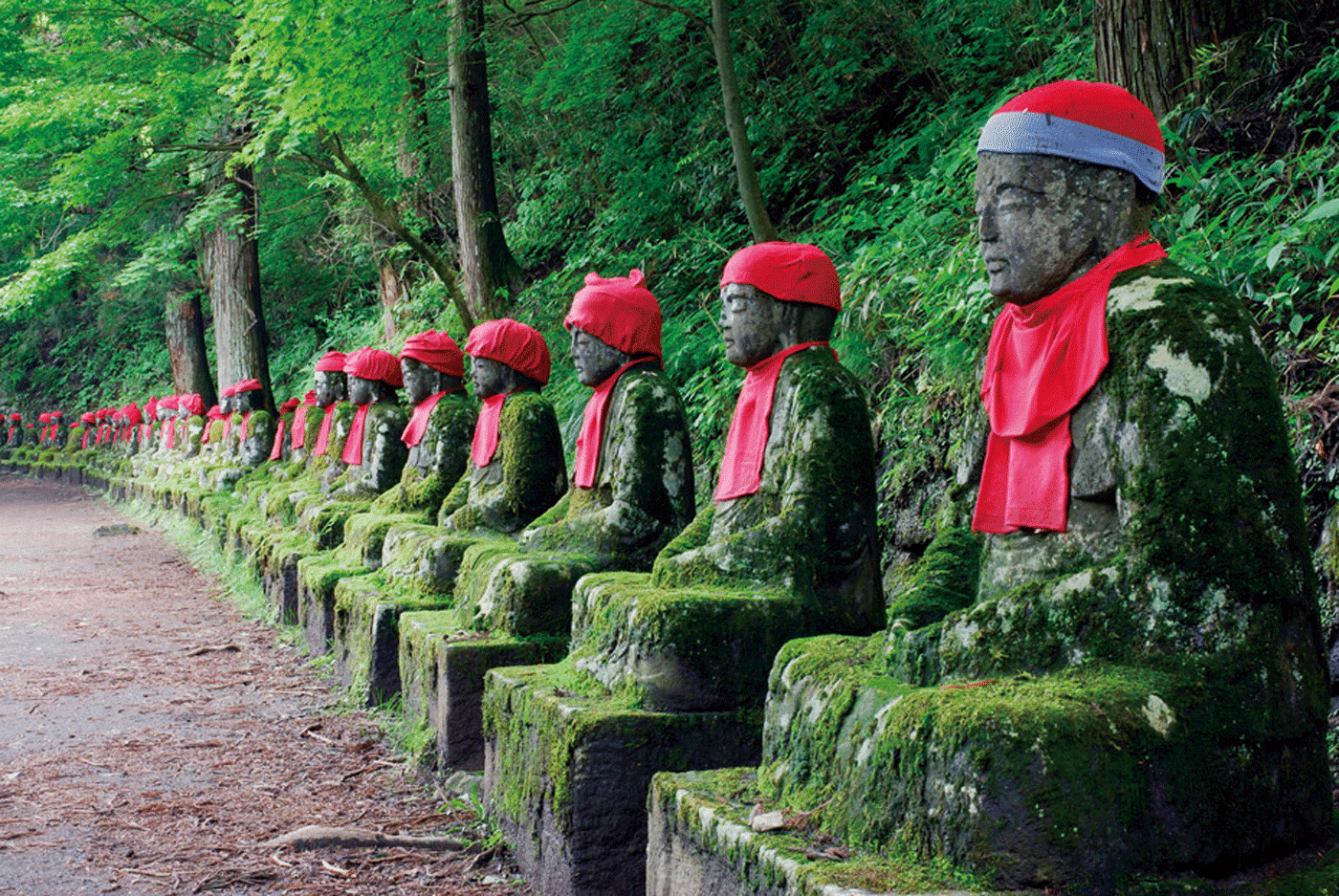You’re in Tokyo and pumped up on all the adrenaline the city has to offer; but don’t forget about getting outside the locus. Consider a day trip to Nikko. Passengers depart from Tokyo’s Asakusa station via the Tobu Railway, and the smooth, Limited Express train journey takes just under two hours. Nikko offers travelers a Zen prescription for escaping the hustle bustle of Japan’s capital.
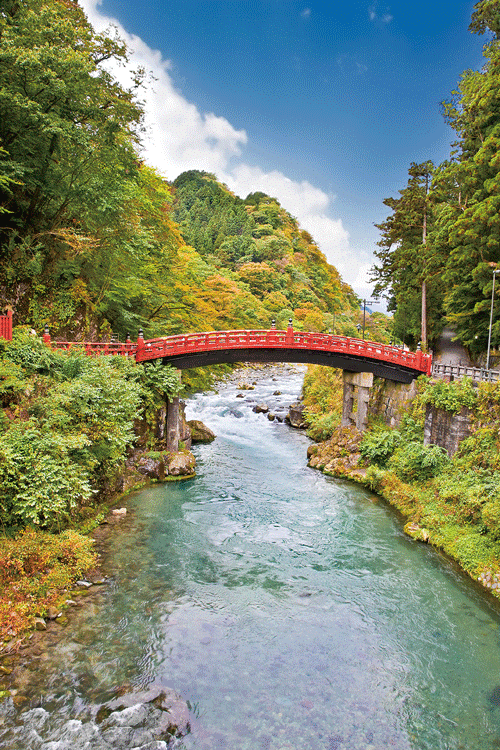
Nikko in Japanese means sunlight. The name comes from Mount Nantai, the home of the goddess Kannon, which has been a holy place for over 1,200 years. The city and Nikko National Park are famous for the many shrines, temples and mausoleums and arranged around them. Shinto and Buddhist religions coexist here. Toshogu Shrine, Rinnoji Temple and Futarasan Shrine make up the UNESCO World Heritage Site complex. Beyond the temples, Nikko provides scenic views, waterfalls, lakes, hot springs and mountains; it’s practically Zen personified.
Kanmangafuchi Abyss
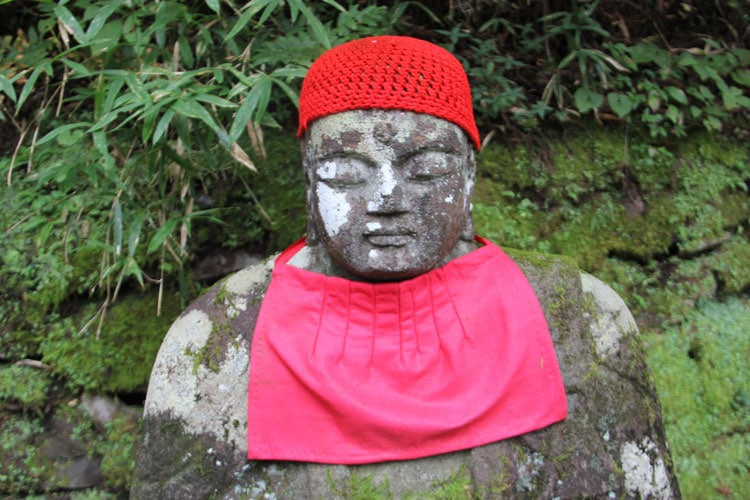
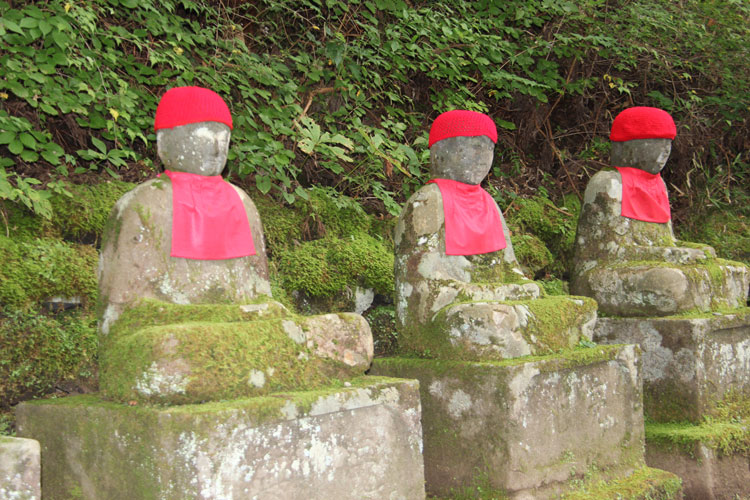
Start your visit by walking to the Kanmangafuchi Abyss, a gorge along the Daiya River, which has a 300-foot walking trail. It’s a meditative place above the river overlooking the Botanical Gardens. Along the trail were originally 100 stone statues of Jizo, a Bohisatva who cares for the souls of unborn children and those who die at a young age. Of these, only about 70 now remain. The statues are wearing red caps and bibs. The color red represents safety and protection, and the dressings themselves are said to keep the Jizos warm and evoke the clothing worn by children during earlier times.
Toshogu Shrine
Toshogu Shrine was built by Tokugawa Ieyasu, the first shogunate of the Edo period, who was later enshrined at the top. It is the most visited site in the Nikko complex. Built in 1616, it consists of fifty-five buildings constructed in lacquered wood and covered with intricate carvings. Over the years, it has been built and rebuilt due to fire and wars and was run by the Tokugawa family until the end of the feudal age in the mid-19th Century. Today, only the Shogun’s descendants and priests can enter through the main gate.
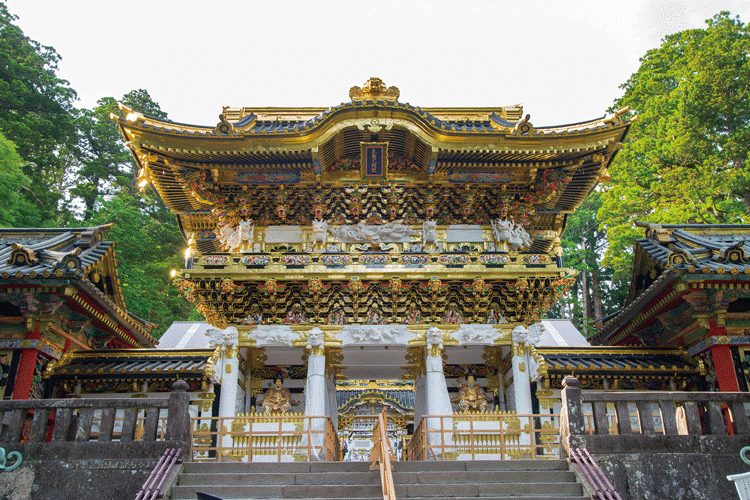
Upon passing through the Torii gate, you’ll see a five-story pagoda, which is a symbol of the synchronization of Buddhism and Shinto religions. Each level represents one of the five elements of the universe: land, water, fire, wind and sky. After entering, go up the steps and through another gate passing the stable to arrive at the most famous building. The building has eight panels with vividly colorful carvings of the three wise monkeys depicting the proverb: “See no evil, hear no evil and speak no evil.” The carvings at the shrine were created by Hidari Jingoro, and he is believed to have incorporated Confucius’ Code of Conduct. The eastern meaning of this proverb was to have good intentions, but in the western world it has been known as turning a blind eye.
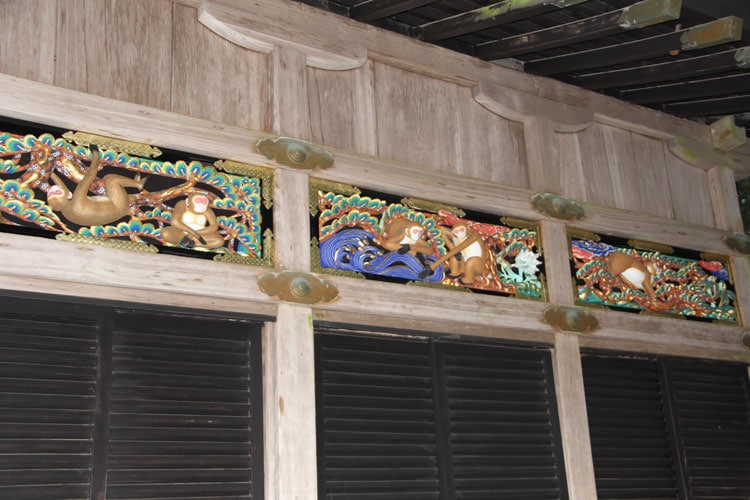
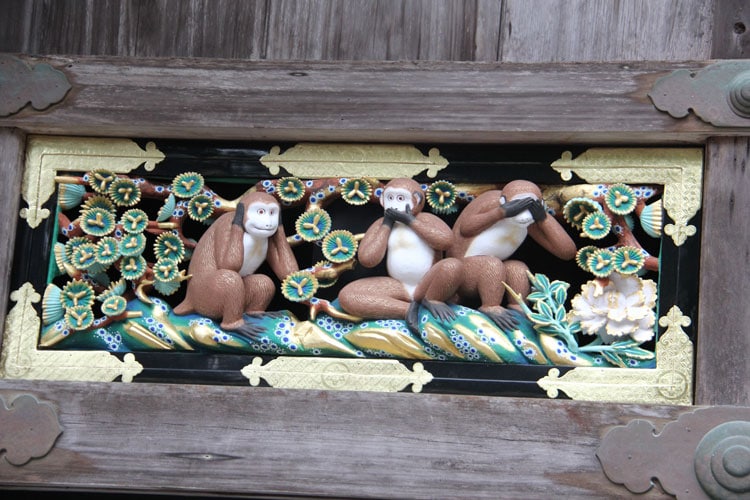
As you continue climbing the 207 steps to the top of Temple Hill, you arrive at the holiest point, Tokugawa’s Grave.
Rinnoji Temple and Futarasan Shrine
The entry of the Rinnoji Temple features a large statue of Sho Do, the monk who founded Nikko as the religious center of Eastern Japan in the 8th Century. Here is the legend: Sho Do came to Nikko to make it a religious area but couldn’t cross the Daiya River. So, he lit a holy fire and asked for divine help saying, “Let us cross the river to enter the Nikko area.” A god appeared and threw two snakes across the river which intertwined turning into a bridge, so he was able to cross. This Sacred Bridge crossing the river is a beautiful vermilion lacquered structure that is revered as one of the three most beautiful bridges in all Japan.
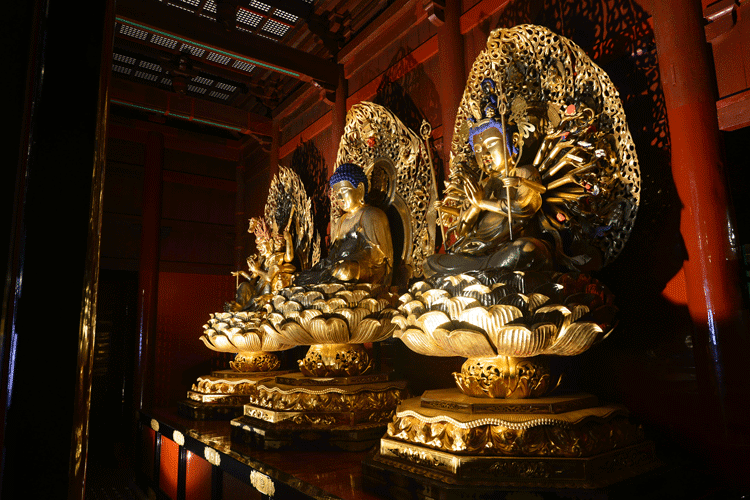
Tomozawa Imperial Villa
Tomozawa Imperial Villa is a short 20-minute walk from Toshogu Shrine and is one of the largest remaining wooden buildings in Japan, containing 106 rooms. Once the summer residence of the Imperial Tokugawa family, it was spared destruction in World War II, renovated in 2,000 and opened as a museum and memorial park. You can tour the house and visit the gardens in back. Built for Emperor Taisho, who stayed there during World War II when he was crown-prince, the remains of air raid shelters still exist on the property.
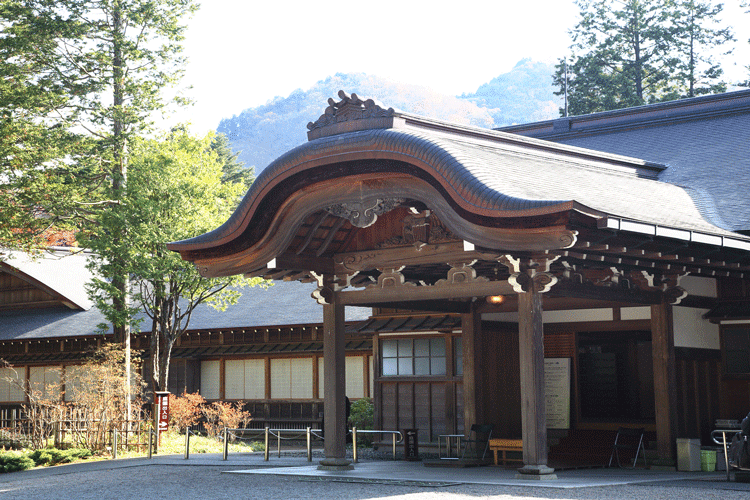
Kanaya Hotel
Kanaya Hotel was Nikko’s first hotel for foreigners. In 1871, Dr. James Hepburn, a medical missionary who created the Romaji alphabet for the Japanese language, was in Japan staying at the house of Zenichiro Kanaya. It was he who convinced Kanaya to open a hotel. This was after the 1868 Meiji Restoration when many foreign diplomats were visiting the city. The Kanaya Hotel played a big part in welcoming them. Guests included: Ulysses S. Grant, Albert Einstein, British author and explorer Isabella Bird and Consul General of the UK to Japan, Harry Parks.
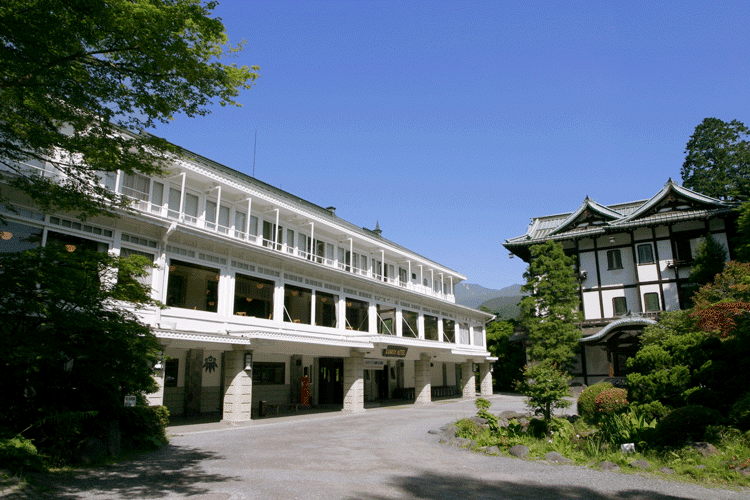
The original hotel called Kanaya Cottage Inn, was a residence for upper class Samurai warriors. Guests called it the Samurai House. The two-story wooden house on the original site is now a museum. It has been restored to its original appearance at the end of the 19th Century. Isabella Bird, an early female explorer and author who wrote the travelogue “Unbeaten Tracks in Japan,” made a trek in 1878 from Tokyo all the way to Hokkaido (Japan’s northern Island), staying at the inn along the way for twelve days.
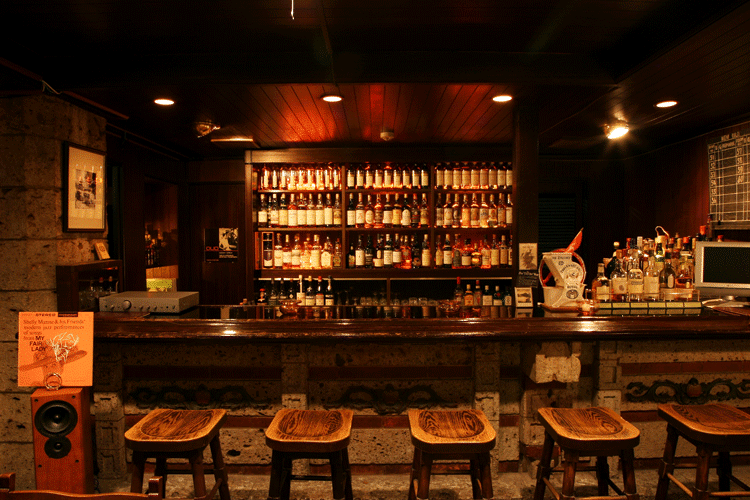
In 1893 the Kanaya moved to its current location and now blends both western and Japanese culture. In the early days, visitors included Frank Lloyd Wright, Helen Keller and Charles Lindberg and later in the 1970’s, Shirley MacLaine. The first structure was simply one story, adding on an annex in a later renovation. Today the hotel has four floors with 71 rooms, and there are three restaurants onsite, one featuring classic French cuisine. From the Kanaya Hotel it’s a quick walk to all of Nikko’s UNESCO Heritage Shrines and Temples.
National Dish of Nikko
Yuba is the local dish. It consists of a thin film on the top of soy milk during the tofu-making process. This film is first dried then re-hydrated, resulting in a delicate strip with a rubbery texture. There are numerous ways to eat Yuba including with sashimi, sushi rolls, soba and ramen.
Nikko is the perfect day trip from Tokyo. Make sure to leave Tokyo early in the morning, so that you can have a full day to see all the temples and shrines and to stroll the city leisurely. Both Autumn and Spring showcase a cornucopia of colors in the foliage and flowers, but any time of the year will provide that perfect Zen moment you’re seeking.
How to Get to Nikko: Depart Tokyo from Asakusa Station via Tobu Railway. There is a Tobu Tourist information Center in the station. You can get to the Asakusa station via the Ginza Metro line.
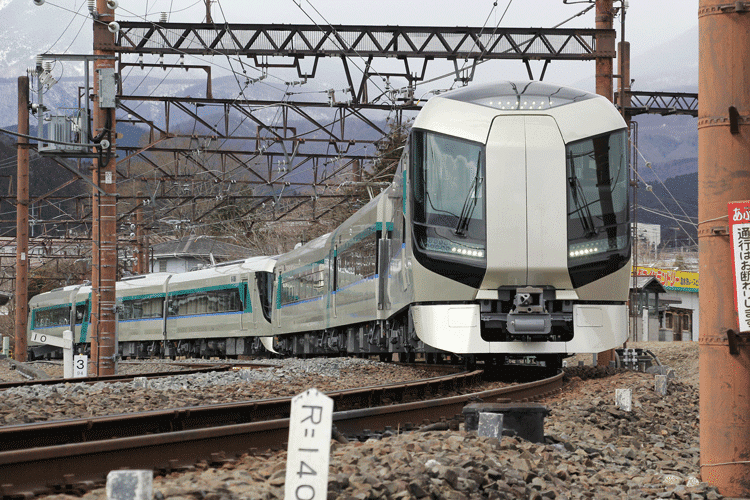
The new Revaty train transports passengers in style with beautifully designed cars by Ken Okuyama. With a white base color inspired by the TOKYO SKYTREE, the interior also features wood grain that symbolizes the earth and trees of the majestic countryside through which the train passes, and a gently curved ceiling shaped in the image of the flow of the Kinugawa and Sumidagawa rivers. The backrests of the seats are colored with an Edo Purple motif, and the fine detailing of the armrest sections features an inden motif. These new trains allow you to get to your destination without having to worry about switching trains, with a new feature of coupling/decoupling of its cars. Wifi is also available on the train.
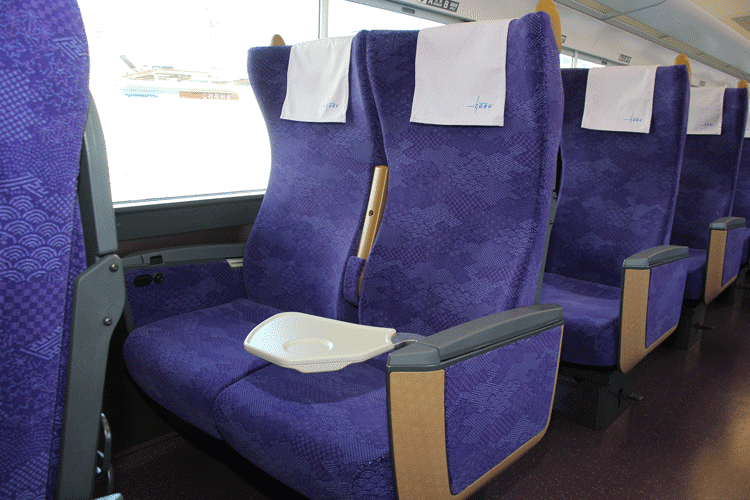
What to See:
Nikko Temples and Shrines
Toshogu shrine, Rinnoji Temple and Futarasan Shrine make up the complex of this UNESCO World Heritage Site. A day trip would not be complete without visiting all of these sites.
Kanaya Hotel History House
Also known as the Kanaya Samurai House, this was the original Kanaya hotel, opened in 1873 by Zenichiro Kanaya. It is now a museum with a restaurant. Visitors can see the rooms where explorer, Isabella Bird stayed while she wrote her book, Unbeaten Tracks in Japan in 1878.
1-25 Honcho, Nikko, Tochigi, +81 288-50-1873, nikko-kanaya-history.jp/en/
Nikko Tamozawa Imperial Villa Memorial Park
The former Edo residence of the Kishu Tokugawa clan, which was brought from Edo to Nikko. Visitors can see the rooms of the villa and tour the gardens.
8-27 Honcho, Nikko, Tochigi, +81 288-53-6767, www.park-tochigi.com/tamozawa
Nikko City Tourism Association
The tourist office offers detailed maps which include walking tours around Nikko.
717-1 Imaichi, Nikko, Tochigi, +81 288-22-1525, www.nikko-kankou.org/
Nikko Concierge
English-speaking staff are available for sightseeing guidance. They can arrange trips, make accommodations and tour reservations, and arrange multi-lingual guides around Nikko for customers who make reservations in advance. Located at the Tourist Center of Tobu Nikko Station on the Nikko Line.
4-3 Matsubara-cho, Nikko, Tochigi, nikko-concierge@tobu.co.jp
Where to Stay:
Nikko Kanaya Hotel
Nikko Kanaya Hotel has a distinctive atmosphere as a classic hotel in Japan. Western furniture and equipment have been beautifully blended with Japanese-style architecture. The hotel was opened in 1873 and is the oldest Western-style hotel in Japan, favored by the imperial family, diplomats and intellectuals. Relax in the comfortable atmosphere of good old days that is created in the finest balance between Japanese and western style interior.
1300 Kamihatsuishi, Nikko, Tochigi, +81 288-54-0001, www.kanayahotel.co.jp/eng/nkh
Chuzenji Kanaya Hotel
Oku-Nikko, where Chuzenji Kanaya Hotel stands, is well-known for its peaceful atmosphere and some of the most prominent seasonal beauty in Japan. The log house style Hotel, which stands quietly at the lakeside of Lake Chuzenji is a quality resort hotel that welcomes you with the warmest hospitality. Beautiful nature around the hotel can be enjoyed in all seasons.
2482 Chugushi, Nikko, Tochigi, +81 288-51-0001, www.kanayahotel.co.jp/eng/ckh
If you have time for an overnight stay in Nikko you can add the following:
Honji-Do: Buddhist temple on the grounds of Toshogu Shrine. This is where the healing Buddha (Buddha of medicine) is enshrined. You can see the murals and the painting of a dragon painting on the ceiling. Some say you can hear the dragon crying.
Oku Nikko Deep Nikko: (in the mountain area) is about thirty minutes away where you can see the nature of Nikko including waterfalls, hiking routes and hot springs and also the former British and Italian Ambassadors summer houses on the lake.

